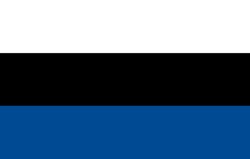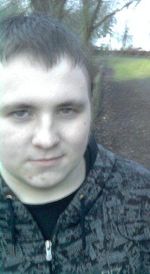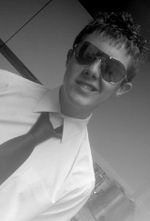Cheslovians

| ||||||
| Total population | ||||||
|---|---|---|---|---|---|---|
| 144 | ||||||
| Regions with significant populations | ||||||
| ||||||
| Languages | ||||||
|
English, Welsh, Scots Gaelic, Urdu, German, Italian, Russian, Polish, Hungarian, Estonian, Cheslovian, Baltiak languages | ||||||
| Religion | ||||||
|
Kaznian Paganism, Roman Catholicism, Protestantism, Church of England, LaVeyan Satanism, Odinism, Paganism, Irreligion, other | ||||||
| Related ethnic groups | ||||||
|
Germans, Russians, Lithuanians, Estonians, Hungarians, English people, Scots, Welsh, Italians, Pakistanis, Canadians, Spaniards, Han Chinese, Irish people, Nigerians |
The Cheslovian people are a collection of ethnically diverse people ranging from Asian to European to North American (non indigenous). Although each individual keeps his or her cultural and historical background, they have all agreed to create a new culture and try to start a new ethnicity called "Cheslovian". Ethnicity can be defined as "a group of human beings whose members identify with each other, through a common heritage that is real or presumed. Ethnic identity is further marked by the recognition from others of a group's distinctiveness and the recognition of common cultural, linguistic, religious, behavioral or biological traits, real or presumed, as indicators of contrast to other group".
Thus, the Cheslovian people have decided to create a culture similar mainly to that of the Russian, German, Hungarian, Estonian and Lithuanian cultures as well as including some other European cultures, primarily from Eastern Europe. Collectively, the Cheslovians resemble Eastern Europeans, precisely Russians, but individually, Cheslovians still retain their original backgrounds, such as German or Pakistani etc.
Malokaznians
Malokaznians are ethnically Cheslovians, as they still retain Cheslovian citizenship along with their Malokaz citizenship, however they are known instead as Malokaznians, due to their dual Cheslovian and Malokaznian citizenship. Malokaznians are just as patriotic as other Cheslovians, the only difference between the Cheslovians and the Malokaznians is, that Malokaznians have their own micronation (Malokaz) as well as being a citizen of Cheslovia. Malokaznians and people from Ud Mahazar form part of the Cheslovian people (also called the Cheslovian ethnicity) as they were originally fully Cheslovian citizens before becomming part Cheslovian, part Malokaznian/Ud Mahazari and part original nationality (eg. British).
Baltians
The term "Baltian" may refers to both the Cheslovian and Malokaznian people. Malokaznian should only be used to refer to those who are from Malokazn Cheslovian should be used for those who come from Cheslovia.
Other denonyms
Cheslovian people can alternatively be called Kaznian, Kaz, Cheslovian and Cheslov.
Language
The Cheslovian people speak the Cheslovian language, and language based on Russian, Estonian, Lithuanian, Hungarian and German, but has vocabulary from other sources such as Kazakh, Chechen or simply self created. Aside from Cheslovian, the Cheslovs also speak German, Russian and try to speak Hungarian, Polish, Lithuanian and Estonian, as part of the collective identity. Individually, they speak, English, German, Urdu, Italian, Scots Gaelic and Welsh.
Cuisine
The Cheslovian cuisine is small yet diverse, Cheslovian Choritsa has many German influences, such as German Mustard and sausage whereas other dishes have influences from Southern and far Eastern Europe using Rice and chopped Beef.
Music
There are two main types of music in Cheslovia: classical and Heavy Metal. Classical music composed in Cheslovia is based upon Russian music, however some (for example the piano tune "Má Kűra Műűsorov") sound slightly oriental. Heavy Metal music in Cheslovia are usually covers of existing Heavy Metal songs by "Korn", however songs which are composed in Cheslovia (which are of a similar genre of Heavy Metal) sound like songs which were made by Nirvana (a Grunge band, Grunge is distantly related to Heavy Metal). During mid 2009 the KDI Army became known for playing loud heavy metal songs during training excercises, to try and intimidate the enemy and to raise moral of the KDI troops, the official "during-battle-song" is Wake up hate by the Nu Metal band Korn, there are two ways the KDI play the music, either by speakers or by Ipods issued to soldiers, this is to increase the addrenaline rush for the troops who are charging enemy lines, after the charge is done, the music must be turned off. Some people have criticised this as an uncautious action, as it will be difficult for soldiers to hear commands from captains.
Literature
Literature in Cheslovia can be morbid at times but has a message that accompanies the poem, for example, a poem about a hangman shows Cheslovia's opposition to the death penalty and also a poem comparing Zombies to Human Beings in that they "gang up" on things which are different (the latter sparked outrage in parts of Cheslovia).
Aesthetics
Aesthetics in Cheslovia include statues and sculptures, paintings and natural resources (such as crystals). There are two major crystal museums on Cheslovia, one in Stettin (called Kheynov Museum) and one in Transylvakia (called The Transylvakian Crystal Collection). Art work is generally stored in the "Musorov Art Gallery", this work is generally considered good and this particular gallery is seen as the "good artwork" collection, however, art work which is considered not god enough for the Musorov Art Gallery is put into the Stari Muzukov Art Gallery, also located in Musorov.
Notable Cheslovians


- Urosh Dushanov - Founder of the Cheslovian Federation
- Artur Voyislav - King of Malokaz
- Vasili Uladimov - Famous pianist
- Boris Groznayev - First Prime Minister of the Cheslovian Federation
- Iigon Dzyozhov
- Vladimir Turkov
- Nikolai Volkov - Commander in the KDI
- Yusenko Vadkov - Prime Minister of Cheslovia
- Yeshmiyek Dukovar - Presidentof Cheslovia

